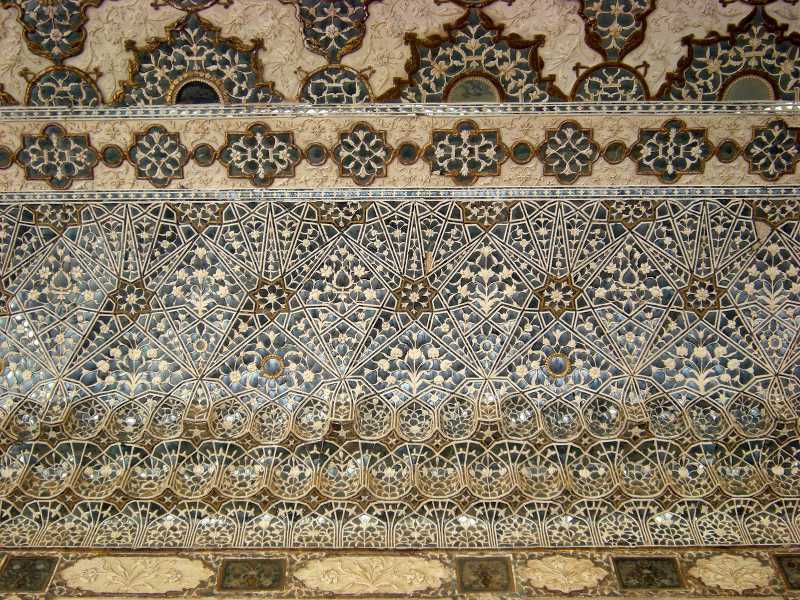FWP:
SETS == A,B; SYMMETRY
JALVAH: {7,4}
MIRROR: {8,3}
About the nature of ;hairat , see {51,9x}.
As for the faux-naïf rhetorical question in the first line, its lineage runs right back to {1,1}. And who better to be asked such a question, than 'the Lord' himself?
Faruqi observes that the mirror, the carpet, 'waiting', and the amazed person all have in common that they are frozen in place, unable to move. But this stupefaction tends to make the verse itself feel inert and perfunctory.
On several other occasions as well, Ghalib invokes the 'six directions' (see {41,4}). As a provocative verse for comparison, to remind us of what Ghalib can do when he's really being Ghalib, consider {152,4}. There we have the 'six directions', but we also have a sense of energy and activity in the verse: we have the 'rakish ones' and the 'heedless one' and plenty of intoxication to allure us into figuring it out. Similarly in {128,1}, we have that hypnotic first line, and also a parrot to intrigue us. And in {41,4}, the mirror is a door that seems to open into a magic (and/or delusory?) land.
Compared to any of those more energetic verses, the present verse really doesn't evoke much ;zauq-o-shauq
, or any keen desire to analyze it. If you want to have a go at an equally obscure but far more
fascinating one, take a look at the next verse, {228,3}.

Nazm:
Waiting is a world in which there are six directions, and in its six directions Amazement has spread a carpet of mirror: 'May his/her glory/appearance somehow become visible'. (255)
== Nazm page 255